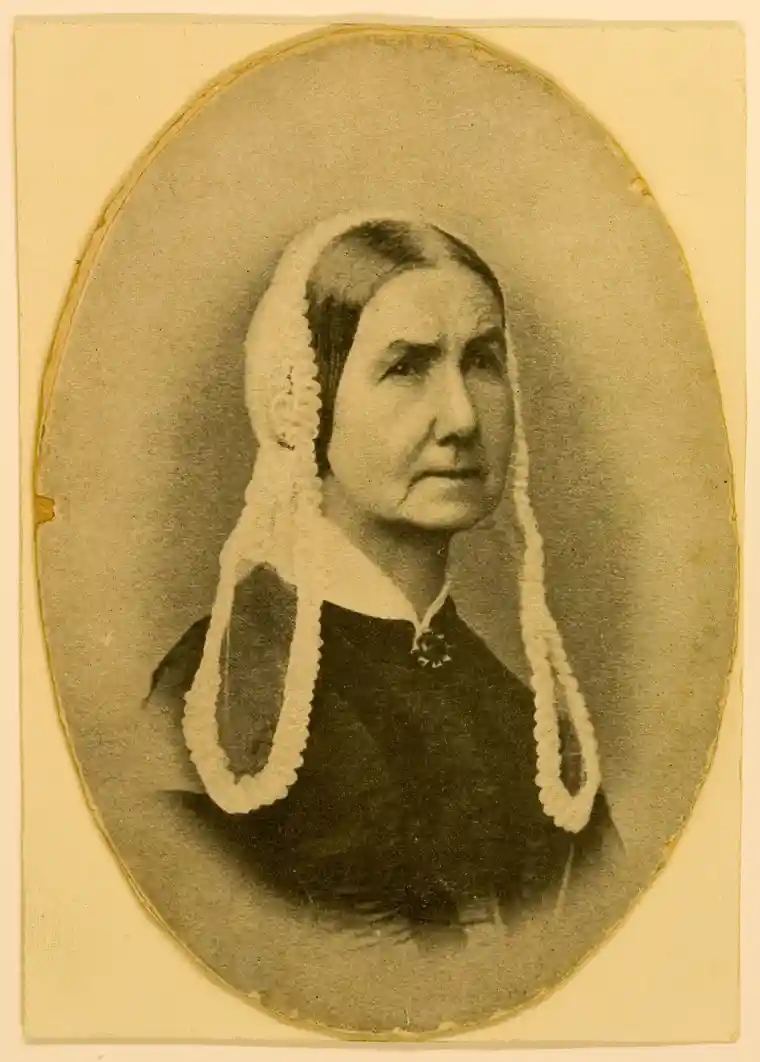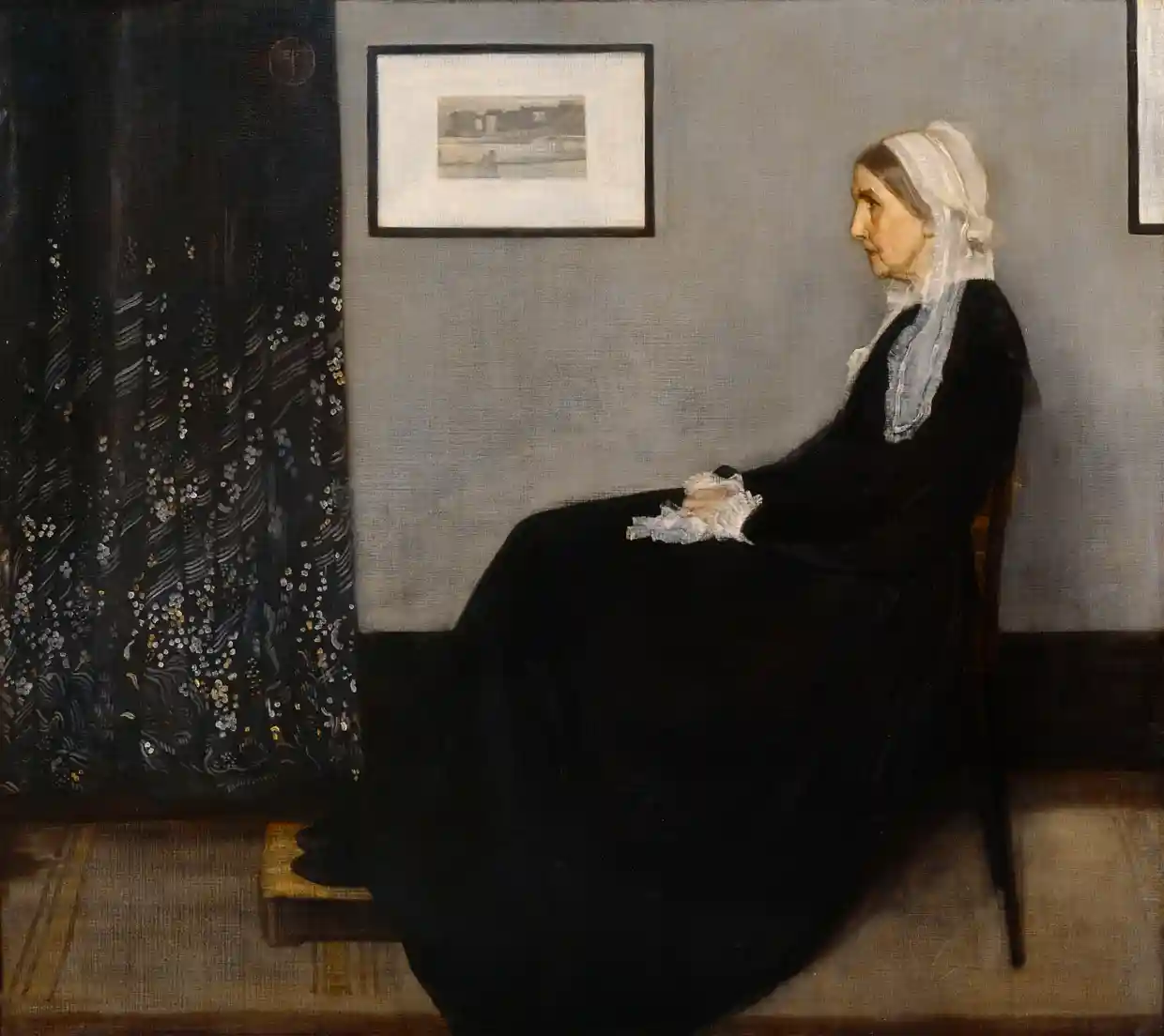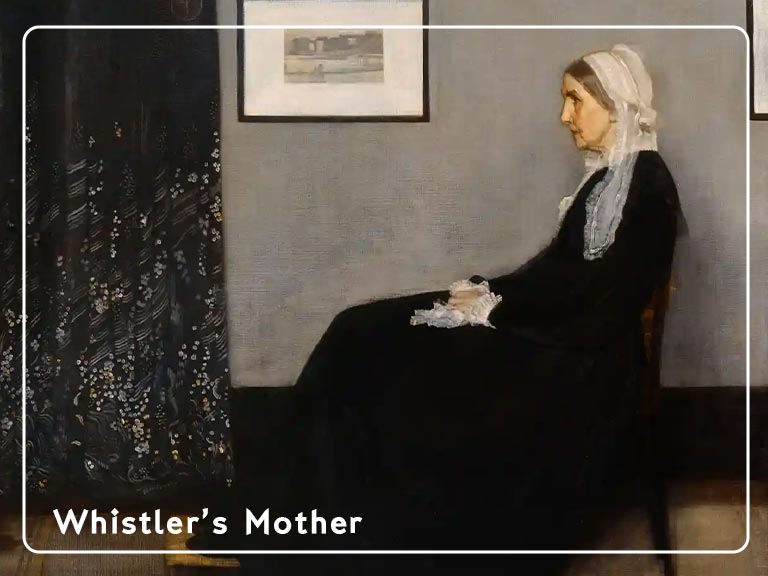Whistler’s Mother, also known as Arrangement in Grey and Black No.1, is an iconic painting by American artist James McNeill Whistler. It was completed in 1871 and has since become one of the most recognisable and beloved paintings in the world. The painting is currently held in the Musée d’Orsay in Paris, France.
The painting depicts Whistler’s mother, Anna McNeill Whistler, seated in a simple wooden chair against a plain grey background. She is shown in profile, wearing a black dress and a white cap, with her hands folded in her lap. The painting is characterised by its simplicity and restraint, with the emphasis placed on the subtle play of light and shadow across the subject’s face and clothing.
Whistler’s Mother is a masterpiece of portraiture, and it has been admired for its timeless elegance and emotional resonance. The painting captures the serenity and dignity of Whistler’s mother, and it has become an icon of maternal love and devotion. The painting has been reproduced in countless forms, from posters and prints to mugs and refrigerator magnets, and it has been parodied and referenced in popular culture in numerous ways.

The painting’s significance goes beyond its aesthetic and cultural value, however. Whistler’s Mother has played an important role in the history of art, inspiring countless artists and influencing the development of modernist art movements like Impressionism and Post-Impressionism. The painting’s use of subtle tones and harmonious colour schemes, as well as its emphasis on the subject’s inner life and emotional state, have made it a touchstone for artists seeking to create powerful and evocative portraits.
Whistler painted Whistler’s Mother using oil on canvas. The painting was a commission from a wealthy American patron.
Whistler approached the painting as a study of tones and colour harmony, rather than a literal portrait. He emphasised the subtle shifts in light and shadow across his mother’s face and clothing, creating a mood of quiet introspection and emotional depth.
To achieve this effect, Whistler used a technique known as “nocturne painting,” in which he painted in a darkened room, using a limited palette of muted tones and carefully controlled brushstrokes. He worked slowly and deliberately, building up the painting layer by layer, until he achieved the desired effect of harmonious colour and subtle tonal variation.
One notable aspect of the painting is the use of the colour black. Whistler was known for his innovative use of black in his paintings, and he used it here to create a sense of depth and contrast. He also used black to convey a sense of the seriousness and dignity of his mother’s character.
The YouTube video above – “Whistler’s Mother – A Painting that Changed the World” is a video produced by The National Gallery in London that explores the impact that James McNeill Whistler’s painting has had on the world of art and culture.
The video provides a brief overview of the painting, which depicts Whistler’s mother, Anna McNeill Whistler, seated in profile against a neutral background. It goes on to discuss how the painting has become an iconic image of motherhood and how it has been reproduced and referenced in popular culture, from advertisements to cartoons.
The video also explores the history of the painting’s acquisition by the French government and its subsequent influence on the development of modern art in Europe. It discusses how the painting has inspired artists such as Édouard Manet, Pierre-Auguste Renoir, and Pablo Picasso, and how it has contributed to the development of the aesthetic movement and the art of the 20th century.
Despite its fame and ubiquity, Whistler’s Mother remains a compelling and enigmatic work of art. It invites viewers to contemplate the beauty and complexity of human emotion and relationships, and it challenges us to find meaning and significance in the quiet moments of our lives. As such, it continues to be a beloved and revered painting, and a testament to the enduring power of art to move and inspire us.

If you would like to receive a roundup of all of our blog posts once a week to keep you inspired in your inbox, why not sign up to our newsletter. You can access our sign up at the top of our page. If you are a London Art College student and you would like your artwork featured here, drop us a line at any time.

